Cruising into the calm turquoise waters off Demre, your boat drifts over partially sunken ruins—fractured staircases, hidden harbor walls, and domestic foundations—silent witnesses to a once-thriving Lycian city now nestled beneath waves. Welcome to Kekova, where history lies in motion and every paddle stroke feels like a dive into another era.
Kekova is a great day trip from Antalya. We visited as part of this tour which combines Kekova with Myra and Church of St. Nicholas, both of which we also enjoyed.
A brief history of Kekova and ancient Lycia
Once known as Dolichiste, Kekova Island sat at the heart of a thriving Lycian maritime network from the 4th century BCE through Late Antiquity. This austere strip of land once hosted a bustling harbor town, whose stone-built stairways, quays, and homes extended right into the sea.
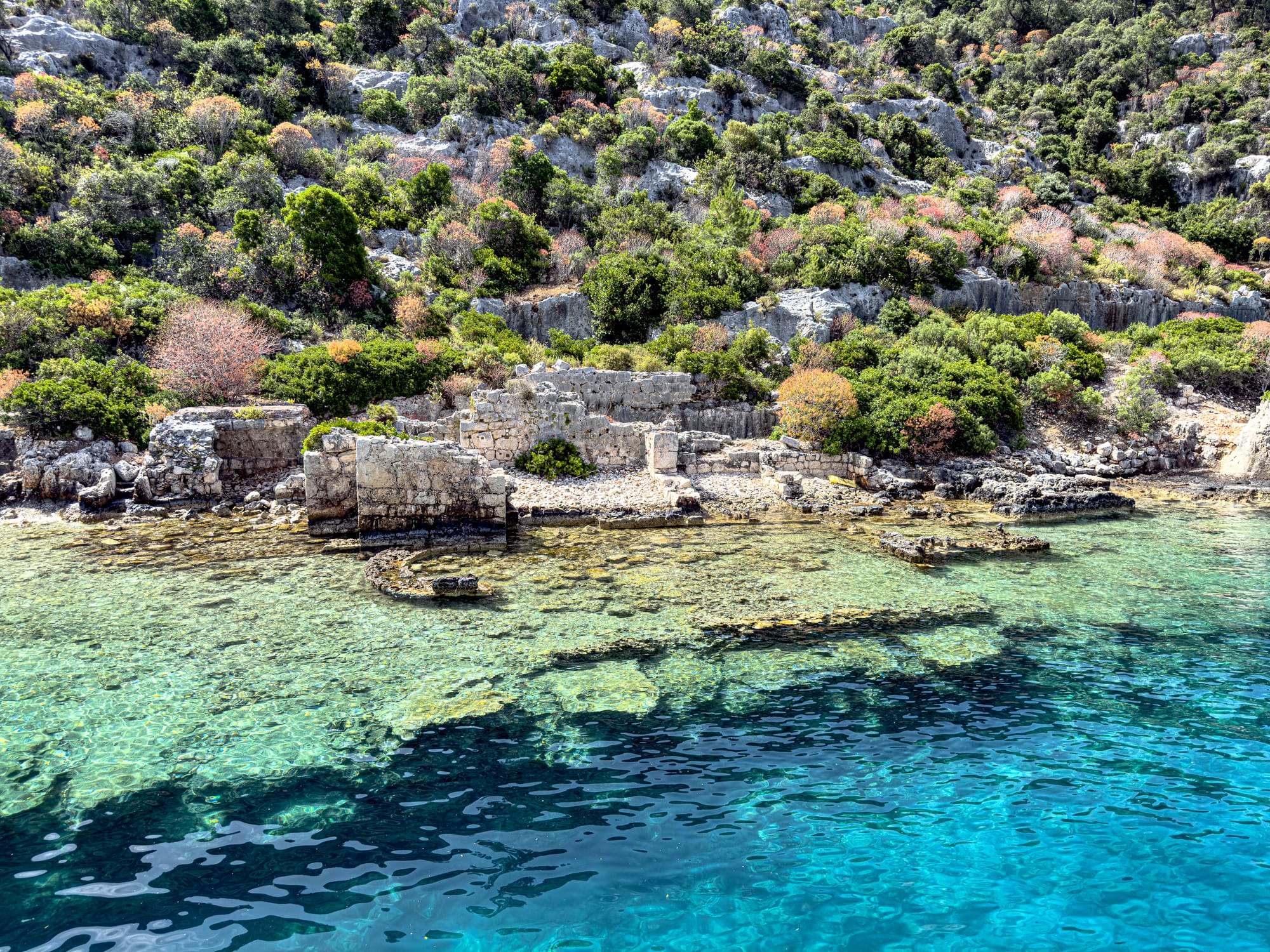
In the 2nd century CE, a powerful earthquake and consequent sea-level effects caused much of the town to sink beneath the waves—its buildings irrevocably shifted from above ground to a half-submerged shadow world. Though rebuilt during the Byzantine era, the city was gradually abandoned amid Arab raids and shifting trade routes by the 7th–8th centuries.
Today, Dolichiste’s remains form one of the Mediterranean’s most evocative archaeological sites: half city, half sea.
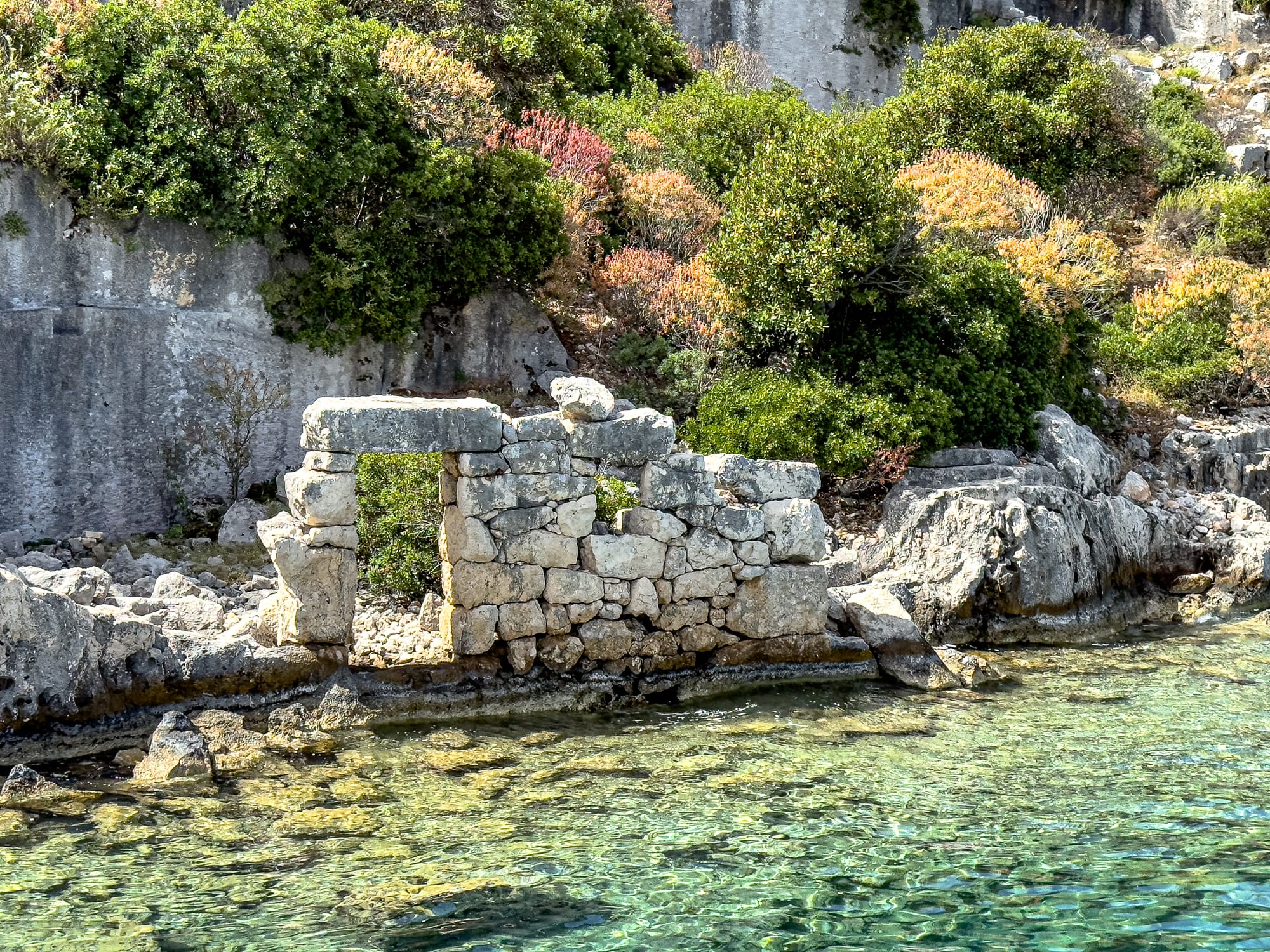
Kekova is a protected zone where partially submerged monuments remain visible just beneath the waterline.
The boat ride: from turquoise sea to submerged ruins
Your Kekova adventure usually begins in a coastal town like Demre or Üçağız. After boarding the traditional wooden gulet, you set gently across shimmering waters toward the ruins.
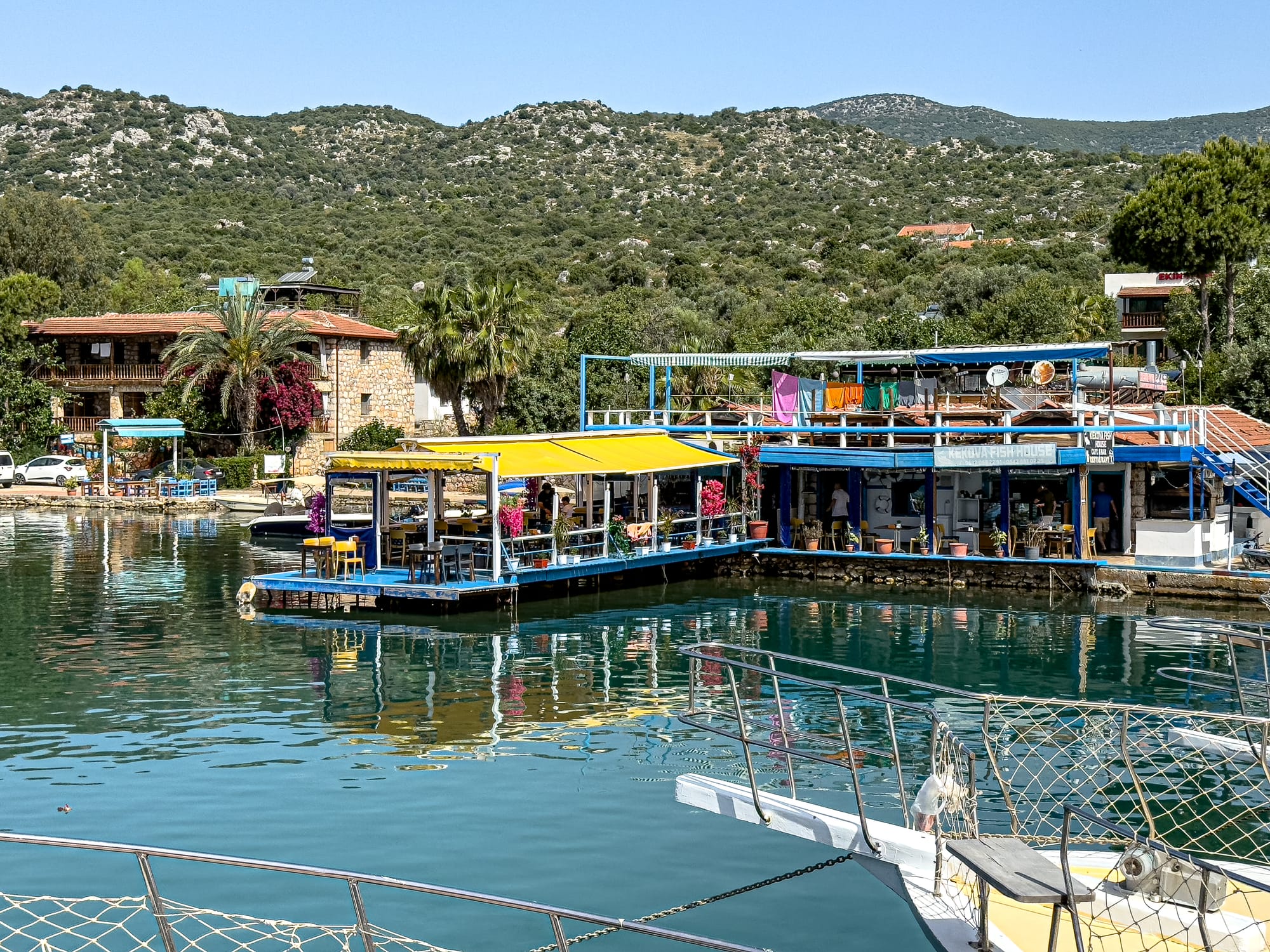
Blue mountains rise in the distance, while sea breezes carry salt and stories of the Lycian past.
As you drift over the sunken city, markings of the ancient harbor—stone ports, low walls, staircases leading to nowhere—come into view through crystal-clear water.
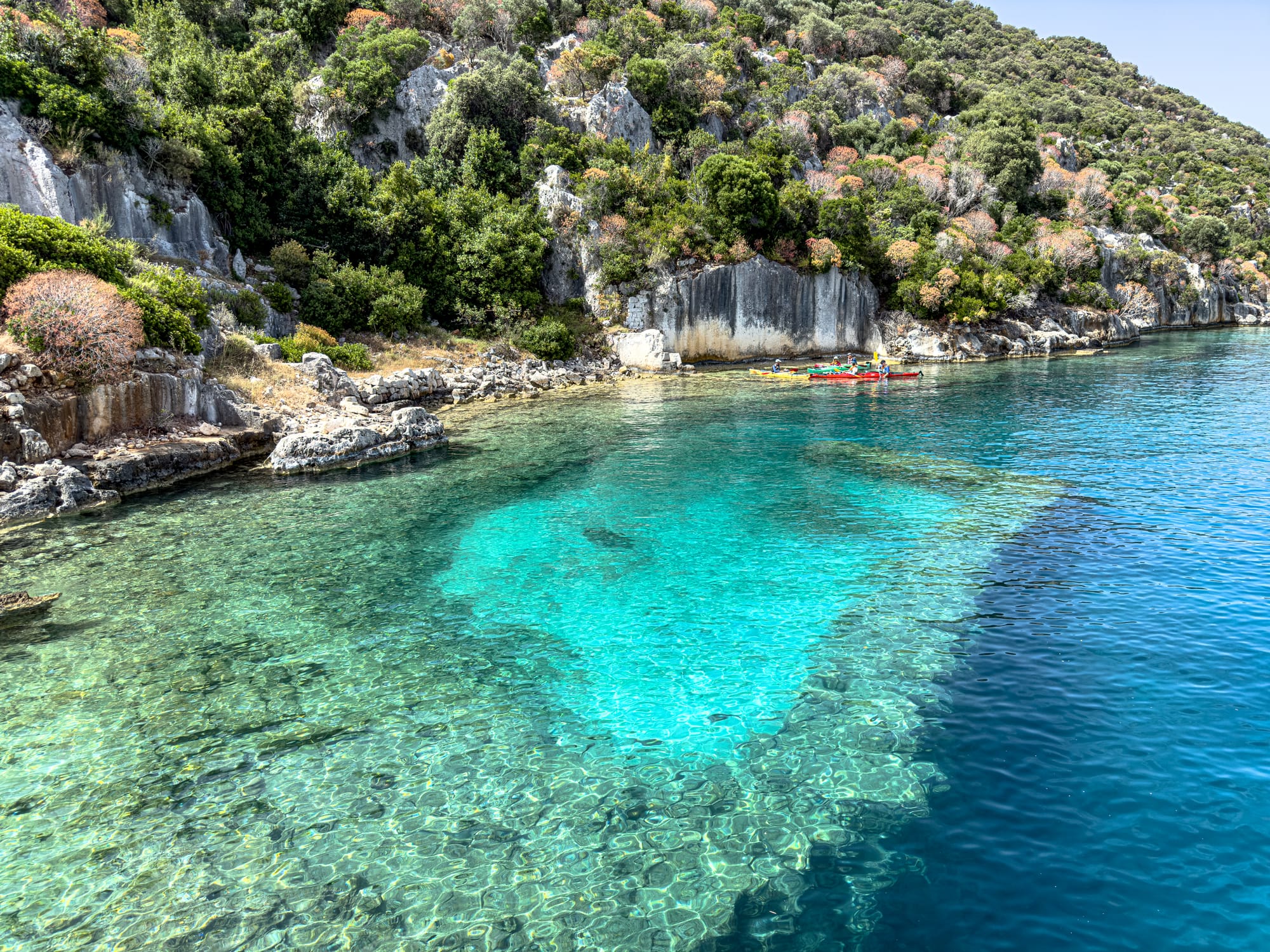
Occasionally, you’ll spot stacks of amphora shards or marble fragments indicating where merchant ships once docked.
The boat may pause in a sheltered cove—perfect for swimming or snorkelling above submerged streets. If available, kayaks let you paddle close to ruins and peer at history through the waves while fish swirl around your legs.
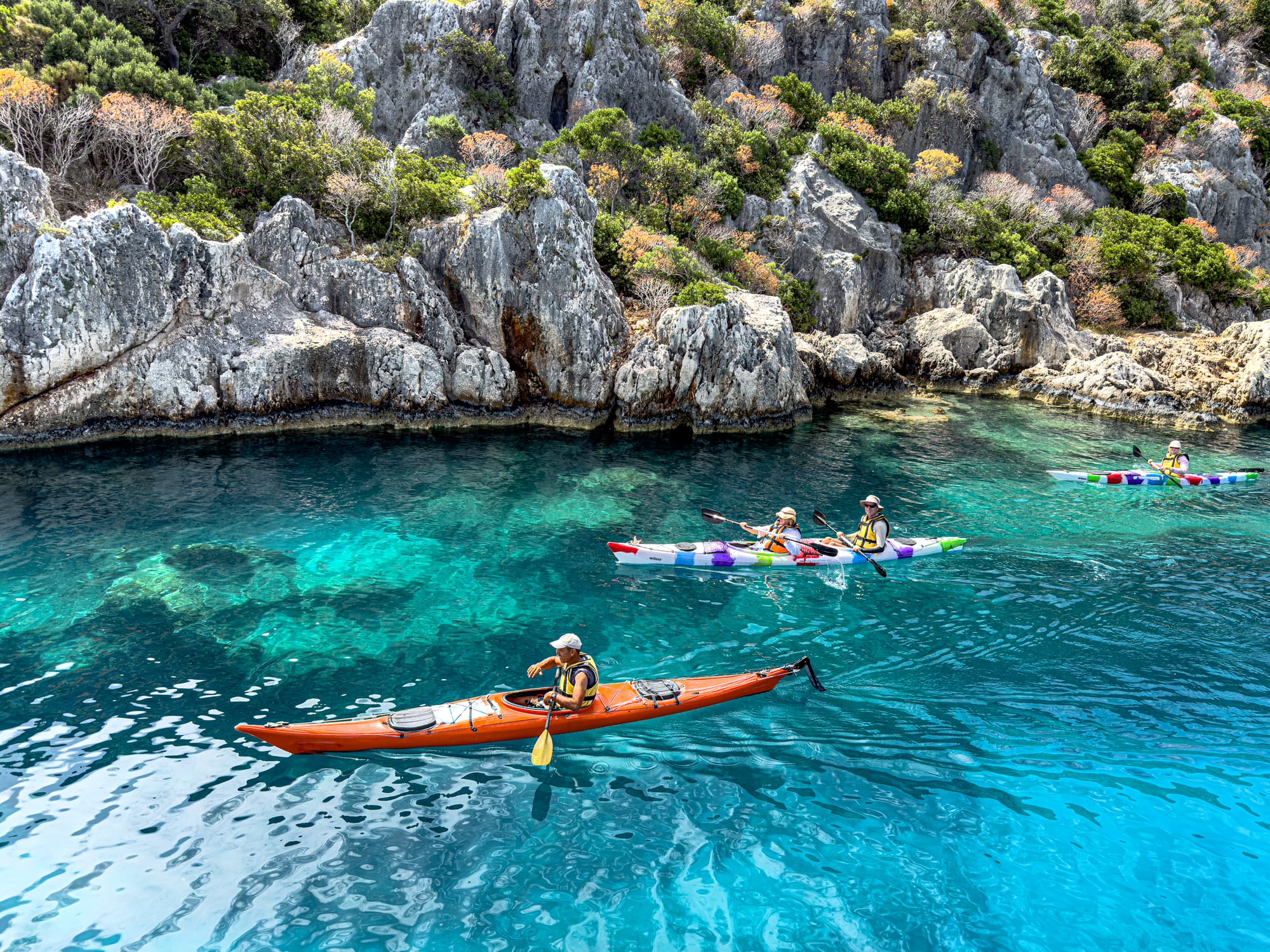
It feels quietly surreal: a city in pieces, still legible to the curious eye.
Swimming around the submerged city
Kekova’s underwater vistas are accessible even to non-divers. On calm days, boat operators anchor so snorkelers can swim over sunken doorways and staircases still visible beneath six feet of water. The clarity is often remarkable.
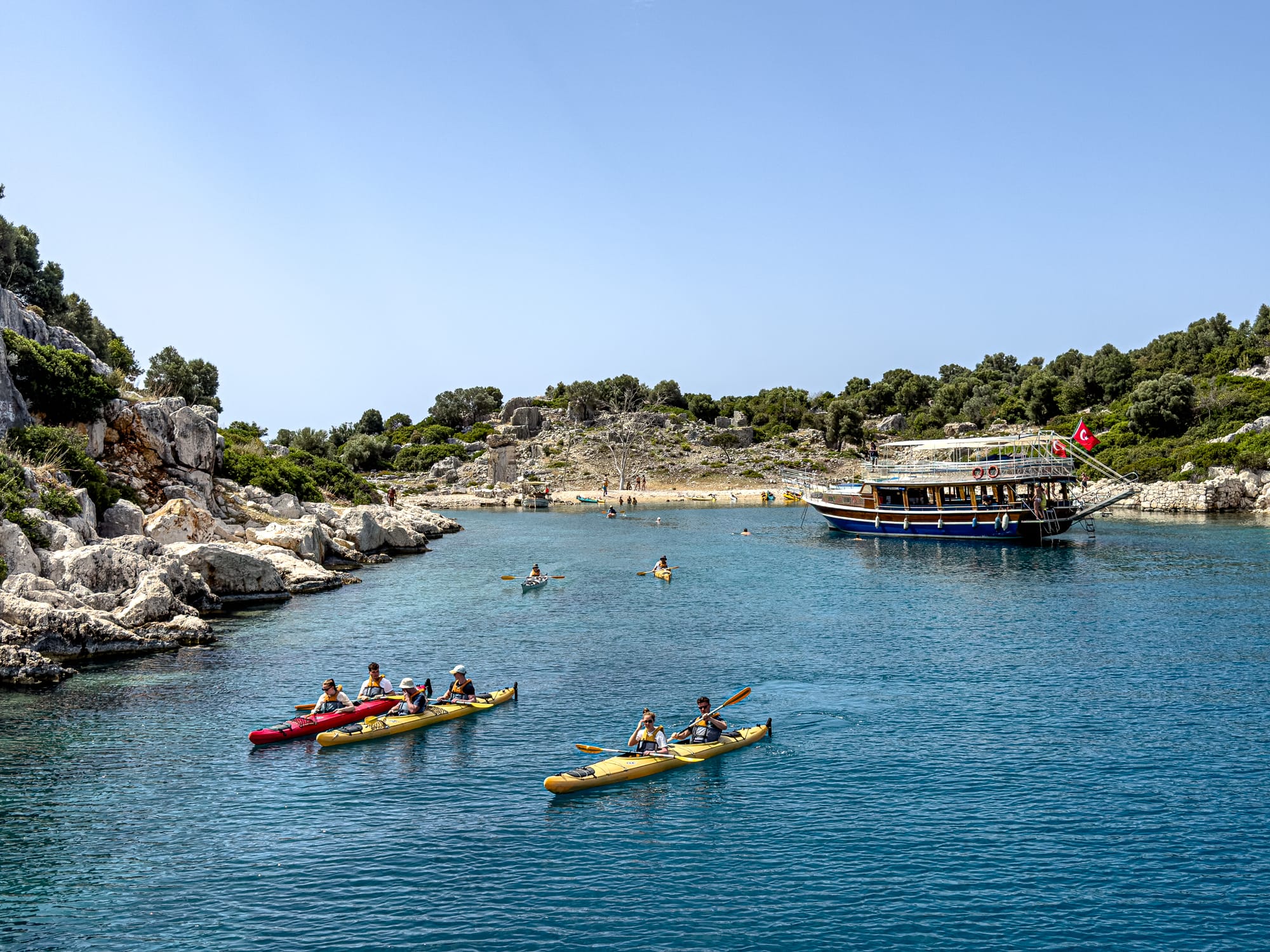
Historical artifacts—foundations, mosaic patterns, water channels, and ancient amphora—lie silently just below the surface. These traces speak of Dolichiste’s role as a Roman and Byzantine maritime hub, where trade in olive oil, salted fish, amphorae, and goods passed through port towns like Aperlae, Simena (Kaleköy), and Teimioussa (Üçağız).
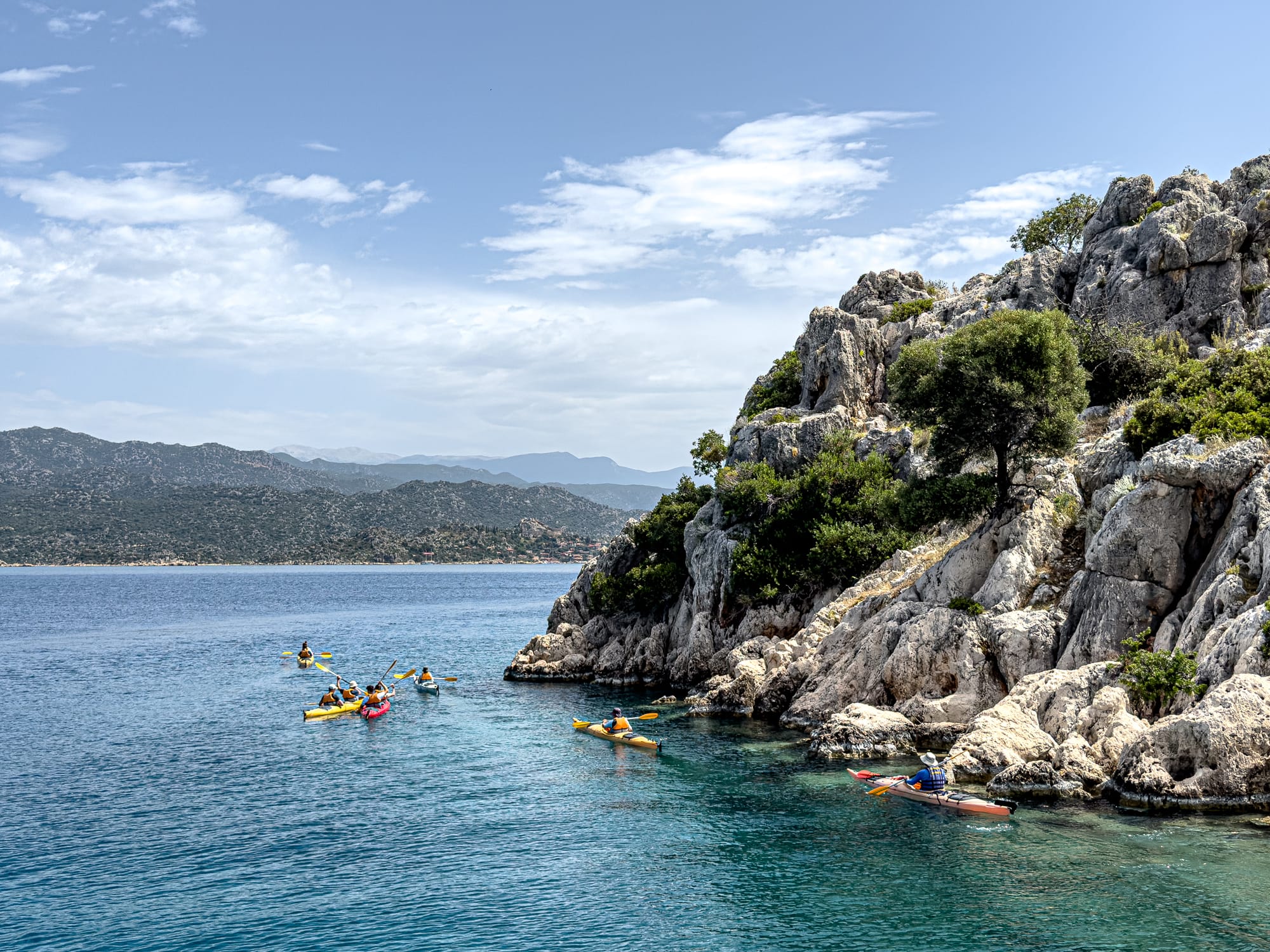
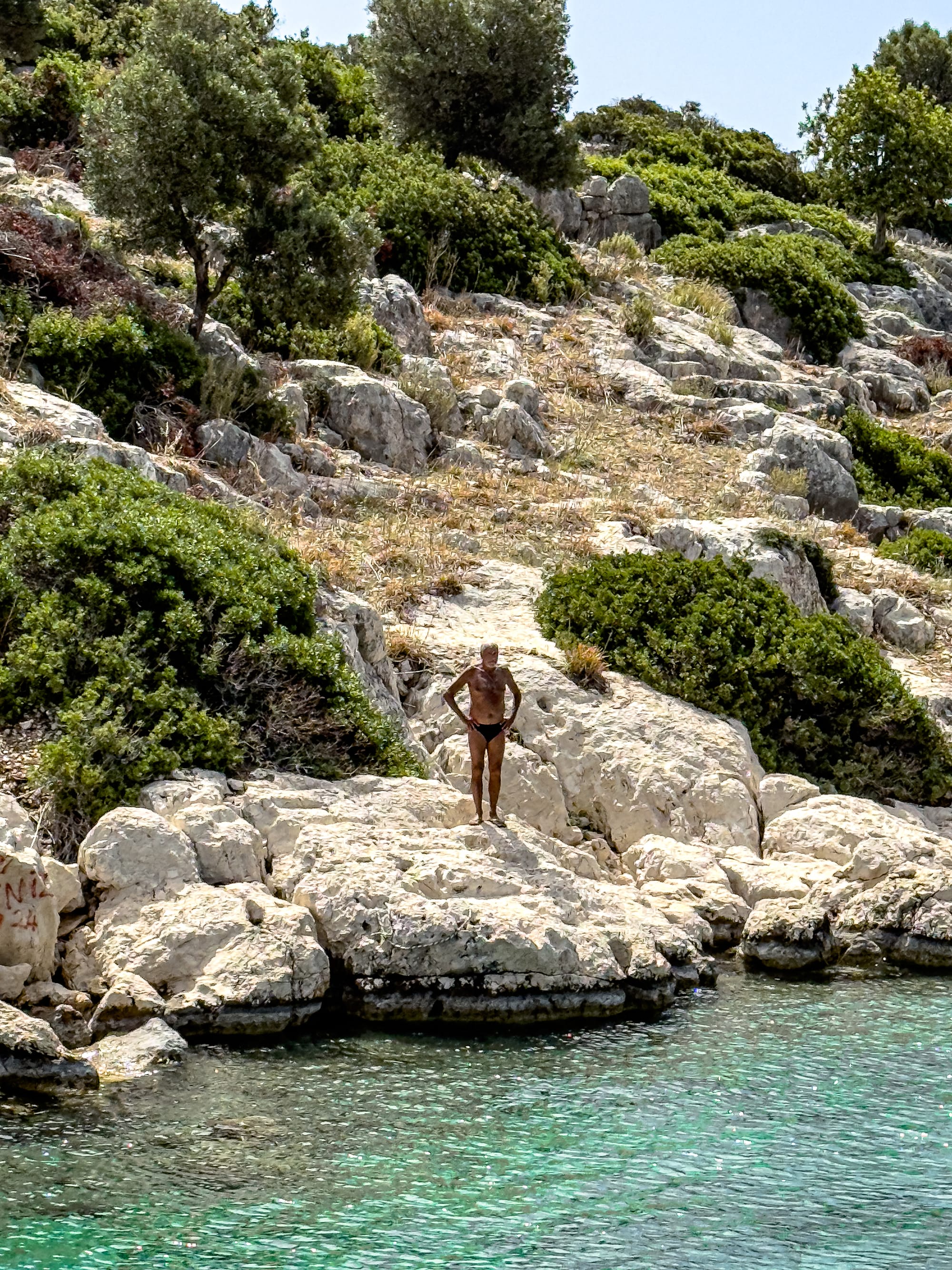
Kayaking Kekova’s cliffs and pausing on sun-bleached rocks—every stretch of this coast invites quiet adventure
Waterlogged structures and modern algae make the scene dreamlike, as if time floats as easily as the water above the ruins.
Beyond the wave line: Simena, Üçağız, and Lycia’s living legacy
Your cruise often includes stops above water—villages like Kaleköy (Simena) and Üçağız (ancient Teimioussa). Kaleköy perches on a rocky hillside, with Lycian tombs, Roman public baths, and a Byzantine castle that offers panoramic views over the island and sea.
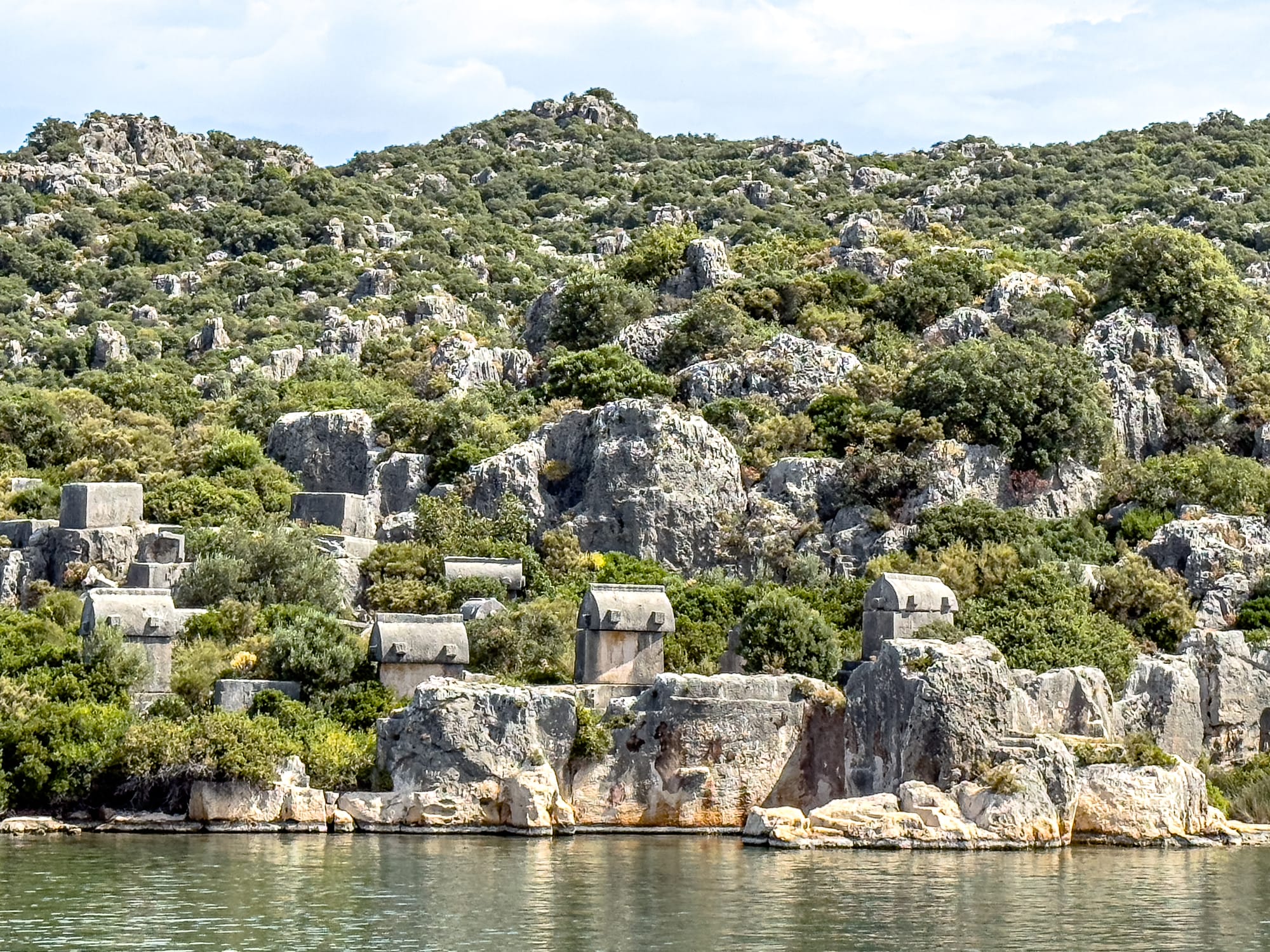
Üçağız, meaning “three mouths,” refers to its three openings to the sea—it once served as a safe landing for sailors navigating Mediterranean storms. Between villages, you pass carved sarcophagi at the waterline, fragmentary quays, and ancient staircases reaching into nothingness.
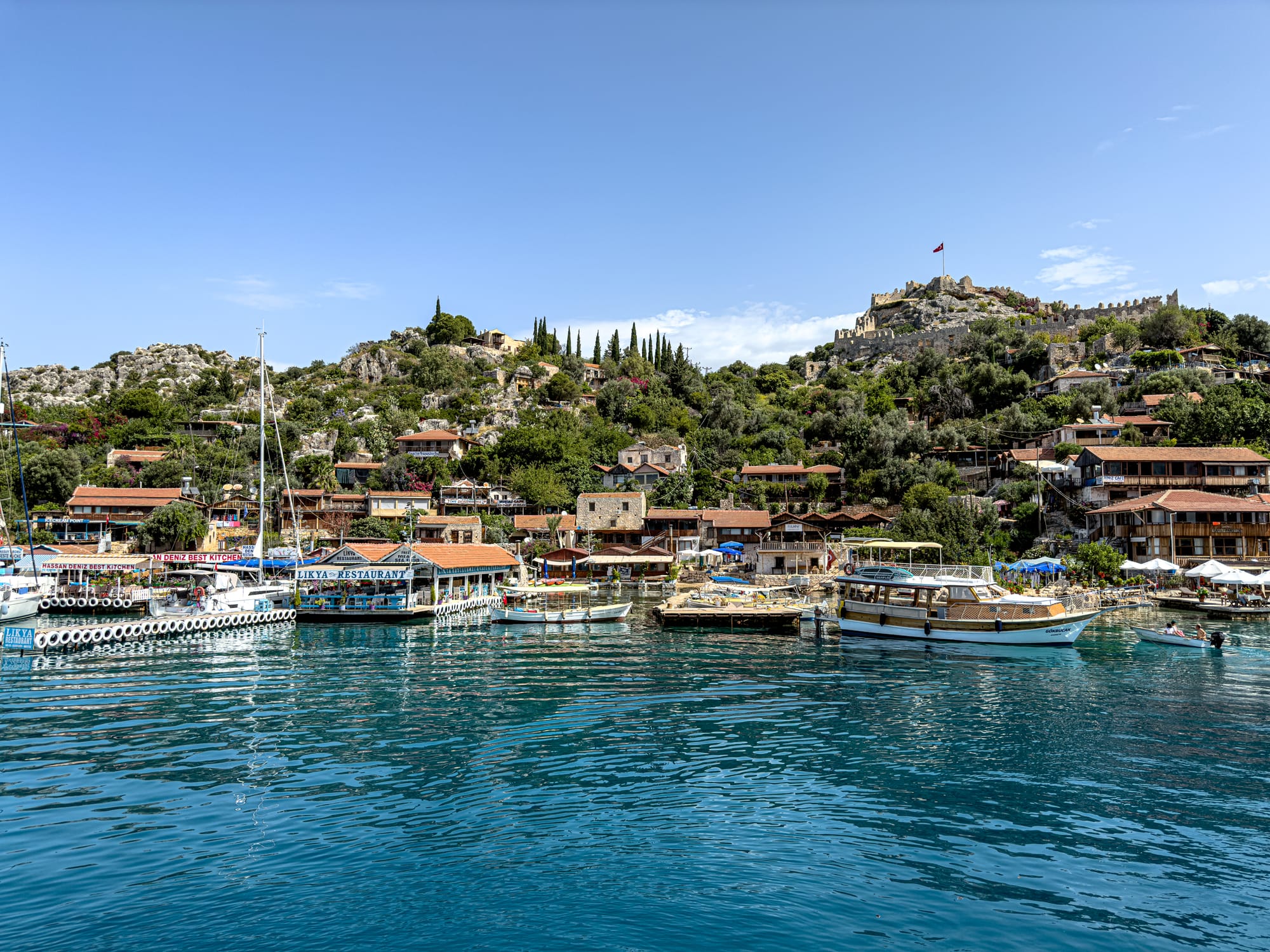
These coastal towns are tranquil and historic—whitewashed homes with bougainvillea, tiny seafront cafes where boats return with fresh fish, and warm locals greeting visitors. They align perfectly with the sunken city’s resonance: life continuing above, archaeology lingering below.
Reflecting on sinking cities: The human resonance of Kekova
Standing on the deck as your boat floats beyond submerged walls, you can’t help but feel a quiet awe. This is a city that once thrived—citizens climbing stairs that now plunge into blue. Families selling goods in a square now underwater. Marble thresholds where waves ripple through forgotten doorways.
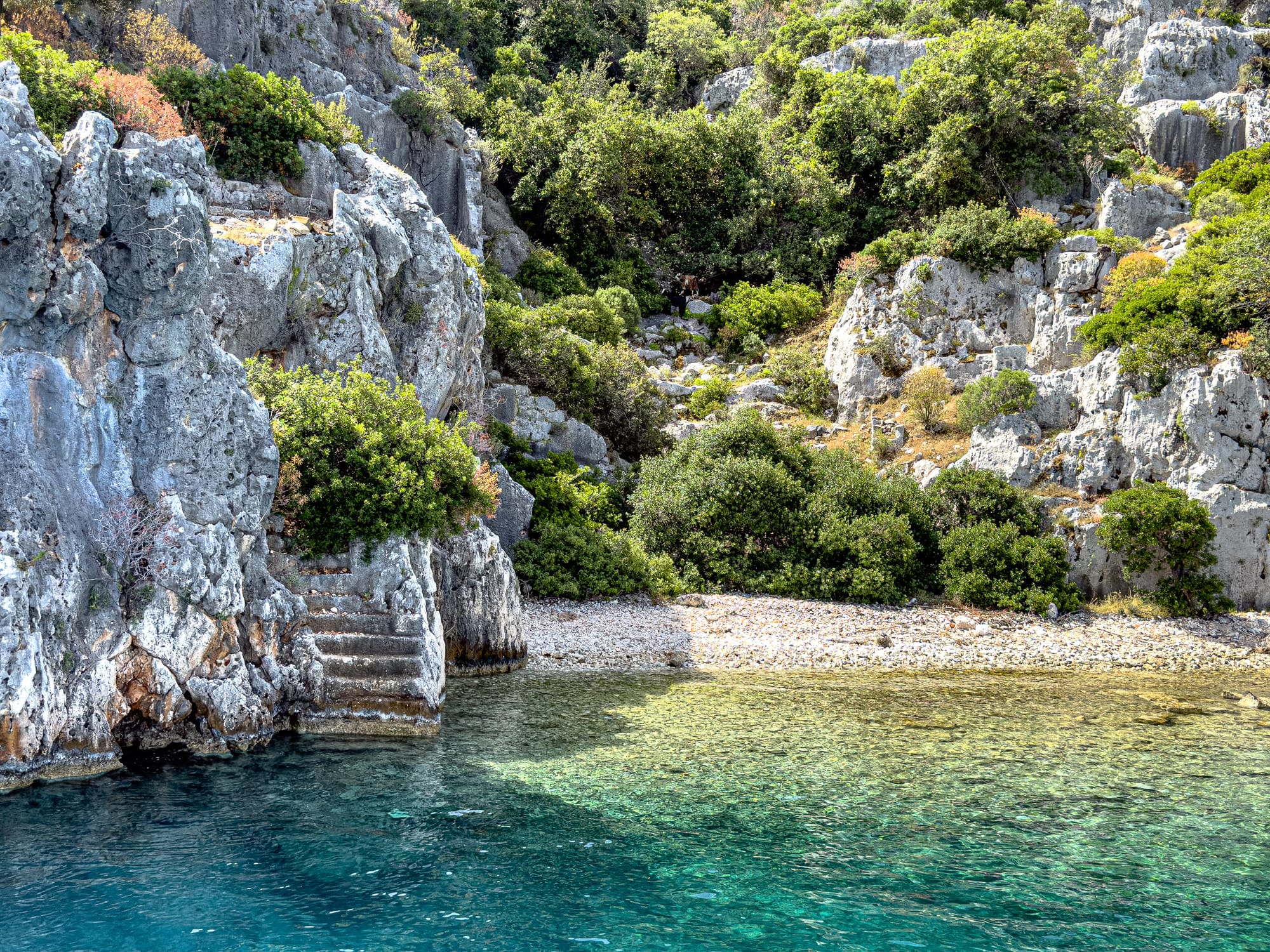
Visiting Kekova lets you witness the spatial reality of a city swallowed by geological change. The submerged ruins are not artifacts in a museum—they exist in the landscape.
Swimming above those ruins is moving. The ocean absorbs history, yet the shapes remain clear in still water. The staircases that once welcomed traders now welcome swimmers. The city lies in liminality—half visible, half erased. It prompts thought: on what timescales does memory survive?
There is something uniquely immersive about visiting Kekova. Unlike ruins behind ropes or behind glass, this place surrounds you. You are floating where people once walked. The sense of time doesn’t feel linear—it feels simultaneous. Kekova remains one of those rare sites where the past and present overlap, gently and visibly.
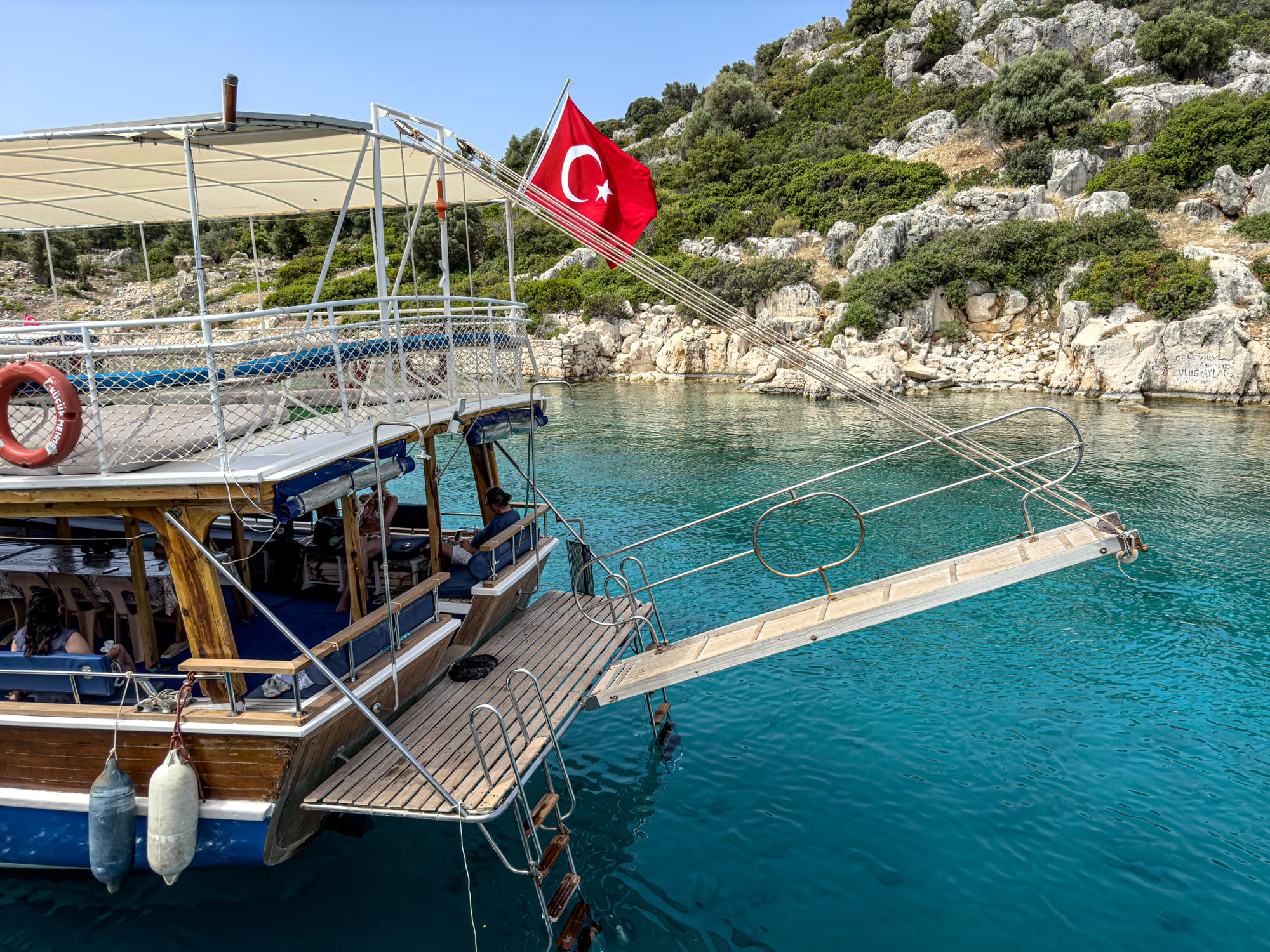
And then there’s the beauty of the place itself. Beyond its historical significance, Kekova is visually astonishing. The water shifts from turquoise to cobalt as the sun moves. The cliffs are flecked with wild rosemary and scattered pines. And all along the shore are hints of the life that once shaped it: a harbor edge here, a row of eroded tombs there. It's a city still present in the landscape, not just remembered but remaining.
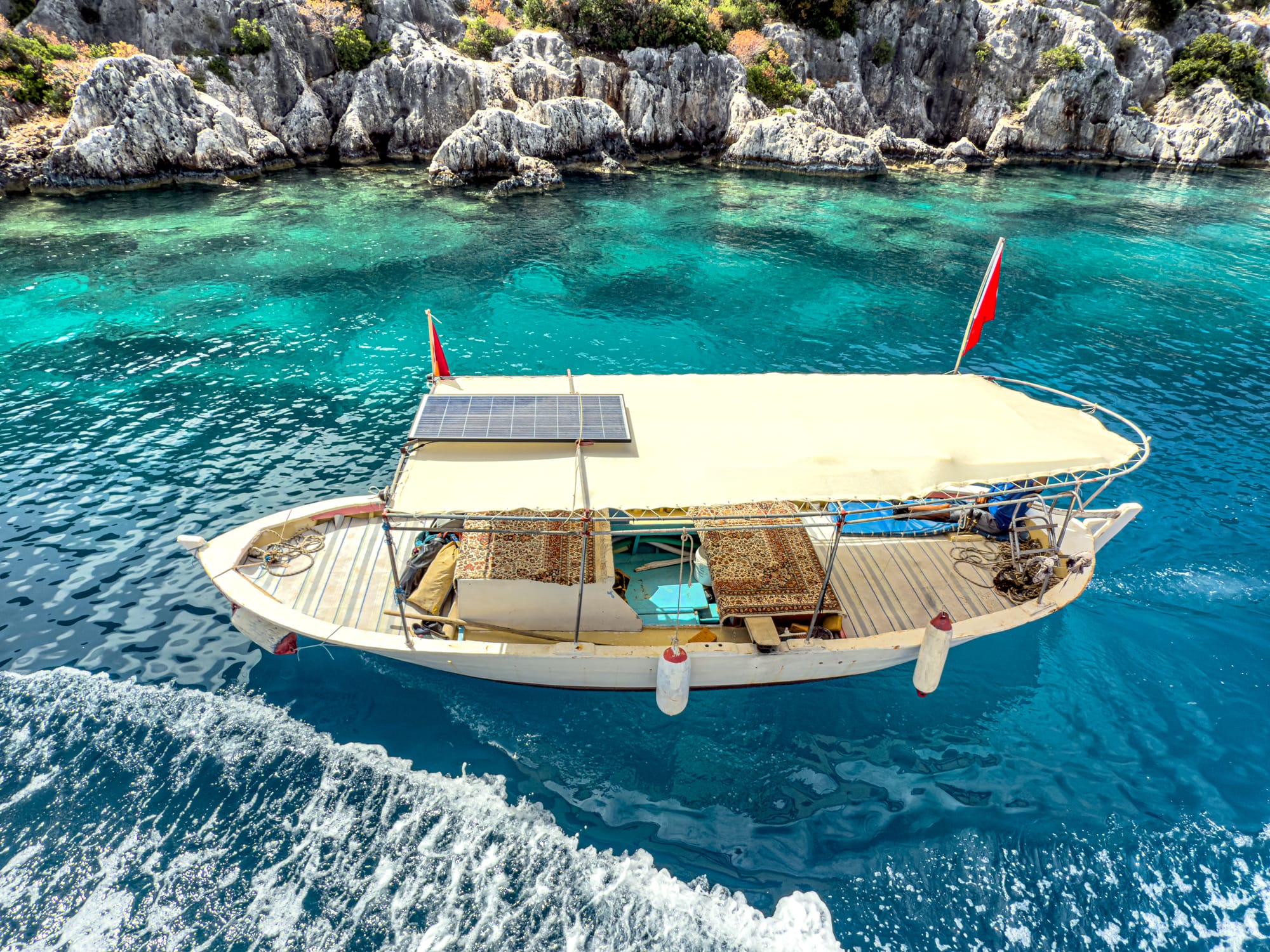
Even beyond history and aesthetics, Kekova feels like a generous experience. Whether floating above ancient staircases, kayaking over terraces, or exploring Simena’s castle, you never feel passive.
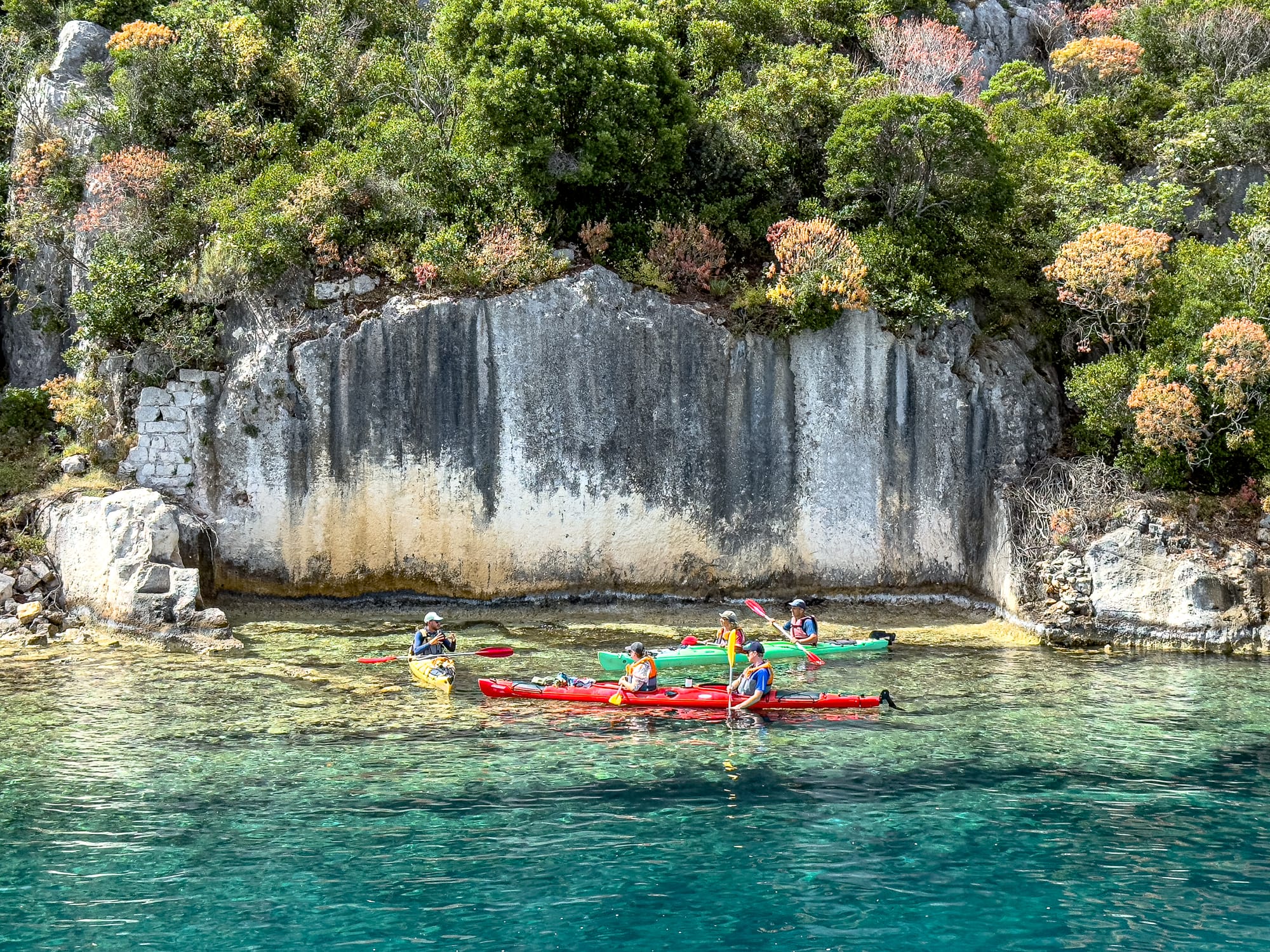
The trip connects you physically and emotionally to what remains.
Visiting Kekova on a day trip from Antalya
Most Kekova experiences are part of full-day tours—such as those from Antalya that include Myra, Demre, Kekova, and the Lycian coast. These typically combine a guided visit to the rock-cut tombs and Roman theatre of Myra, a walk through the ruins of Demre, and a stop at the Church of St. Nicholas, all after heading to the boat that will carry you over the submerged city.
If want a curated way to experience Kekova and its surroundings, we recommend this full-day tour that includes transportation, site entry, and time both on land and water. It's the same one we did.
The experience of sailing Kekova—drifting over ancient quays, swimming above cities lost to tremor and time—was one of Turkey’s most unforgettable coastal memories for us.
The contrast of sunlit sea, hidden ruins beneath waves, and hillside villages creates a visual tableau that’s both serene and uncanny—a photographer’s dream.






